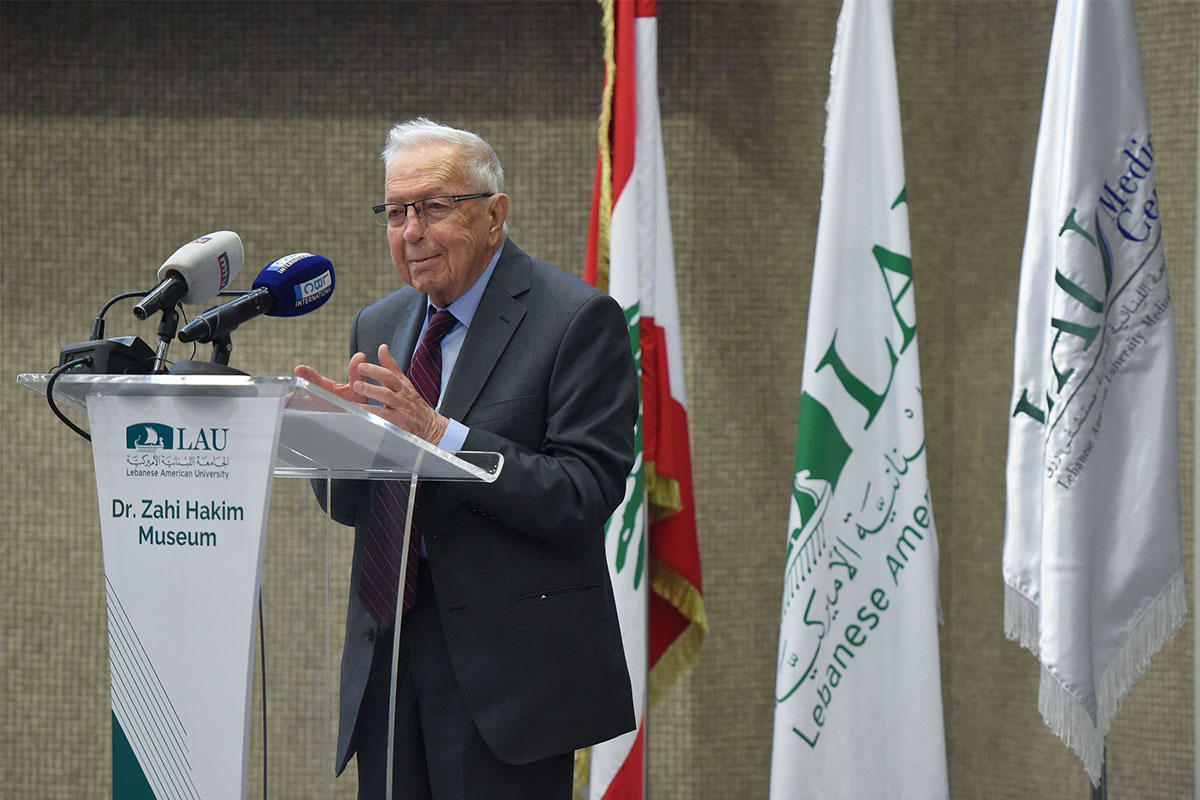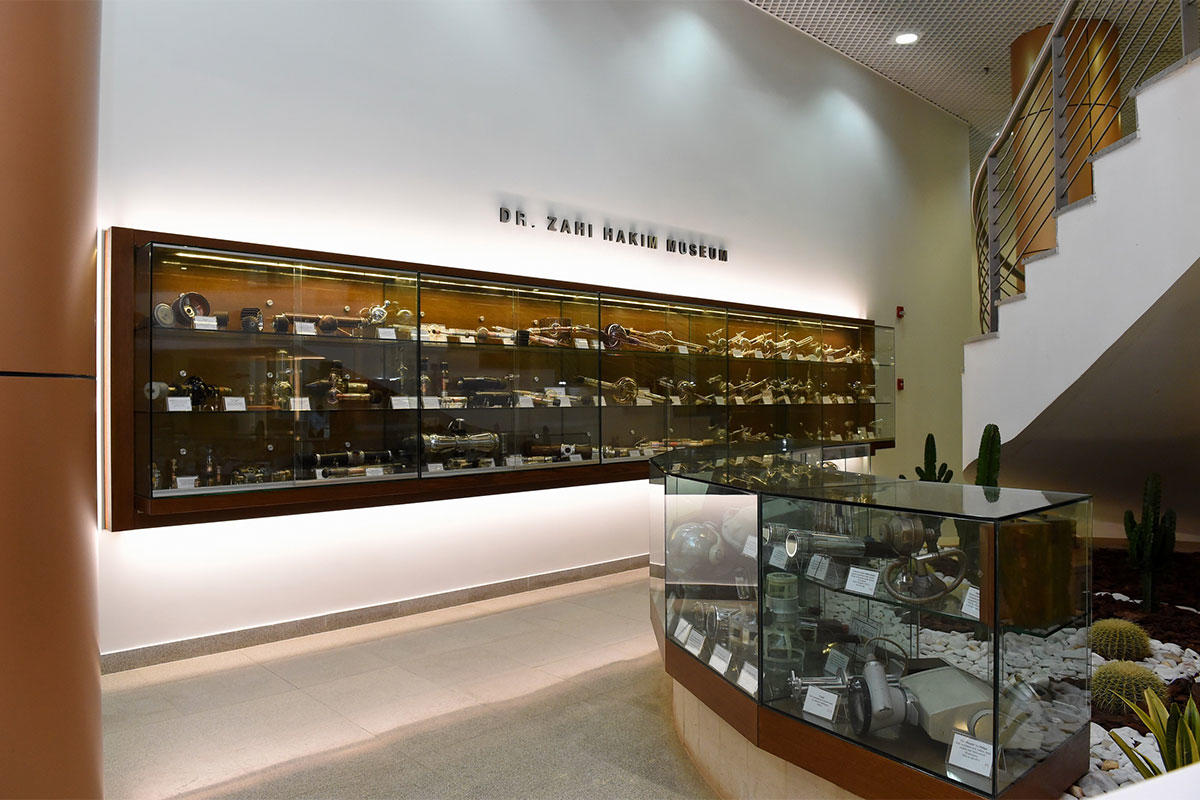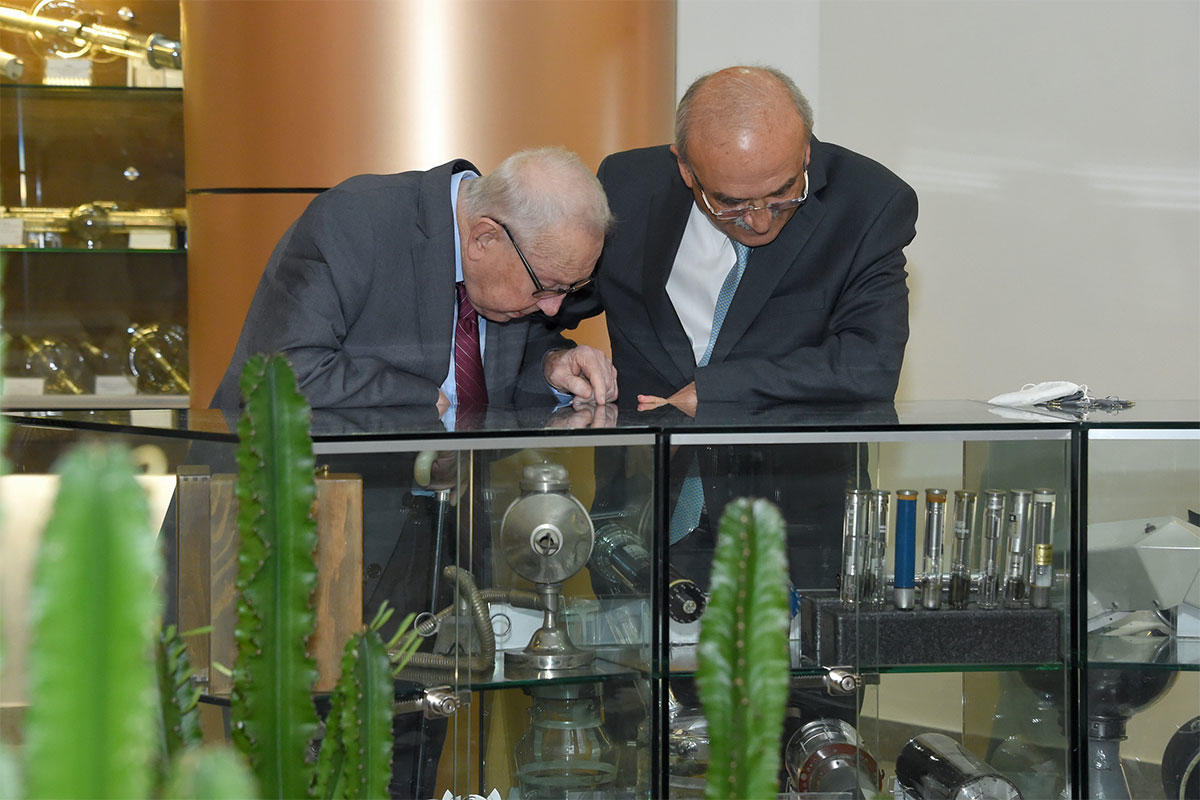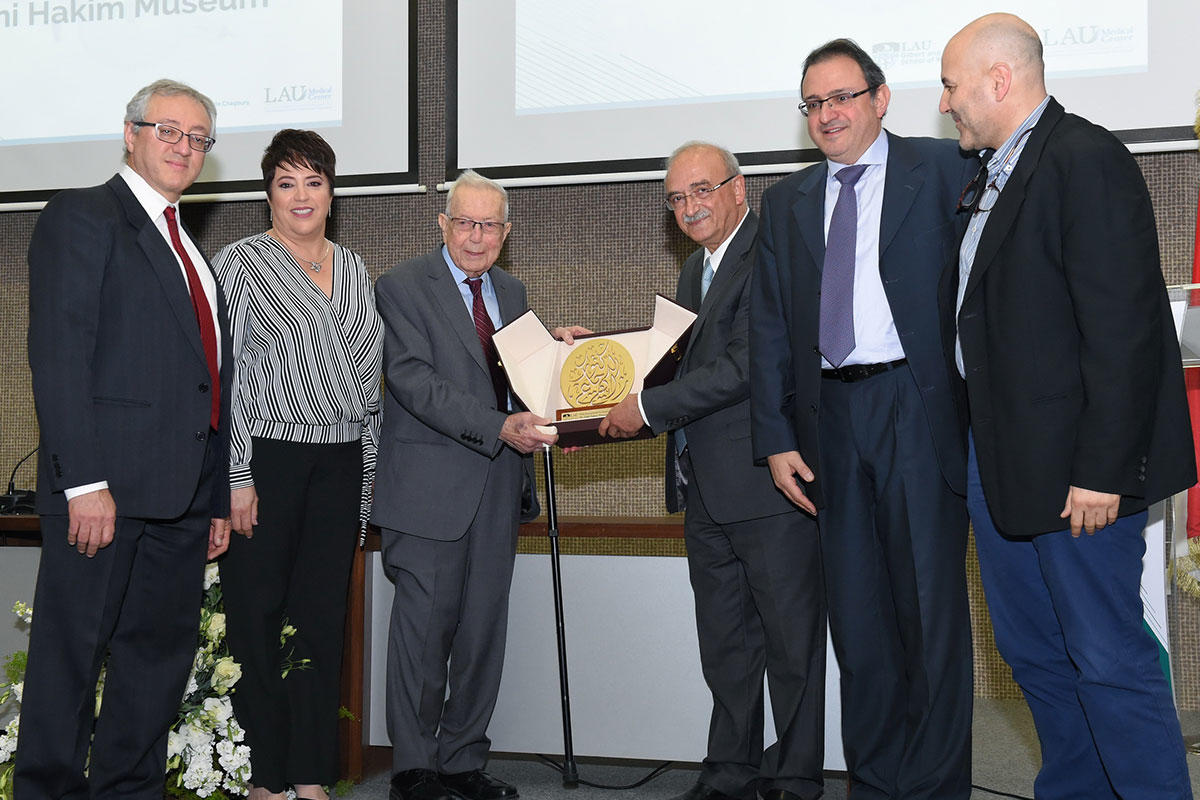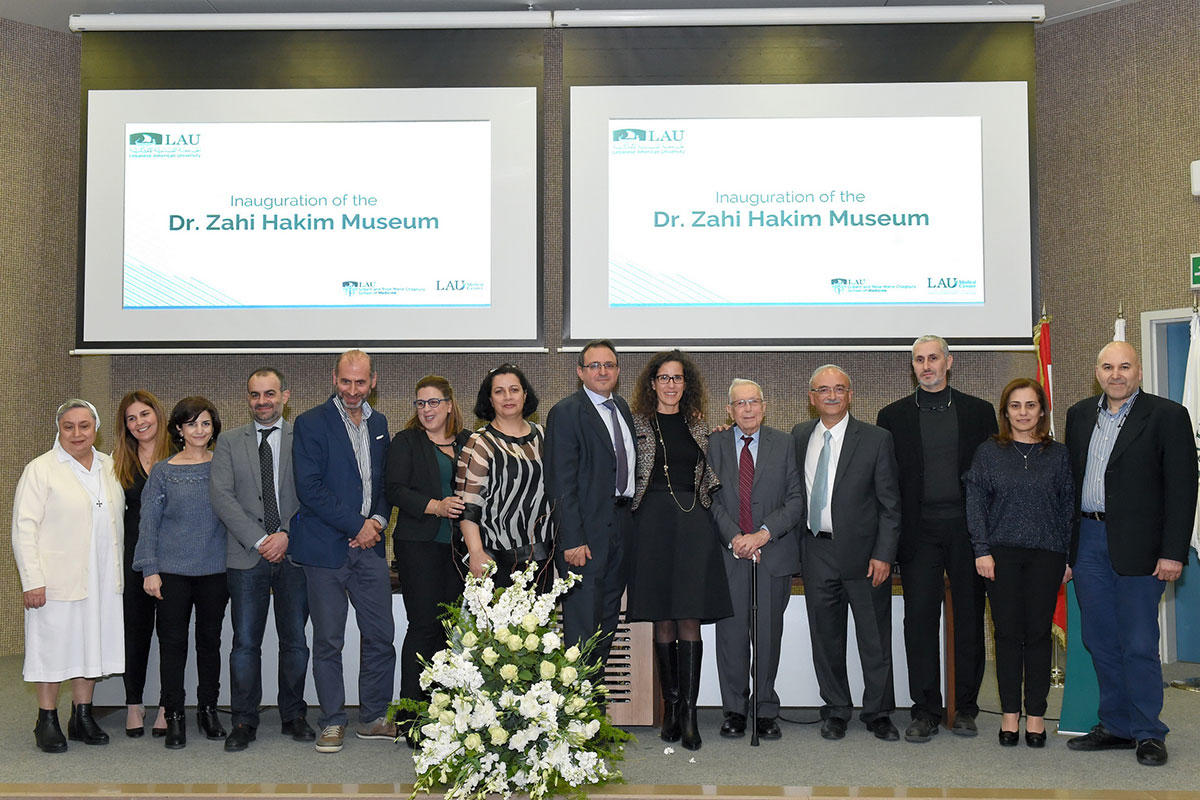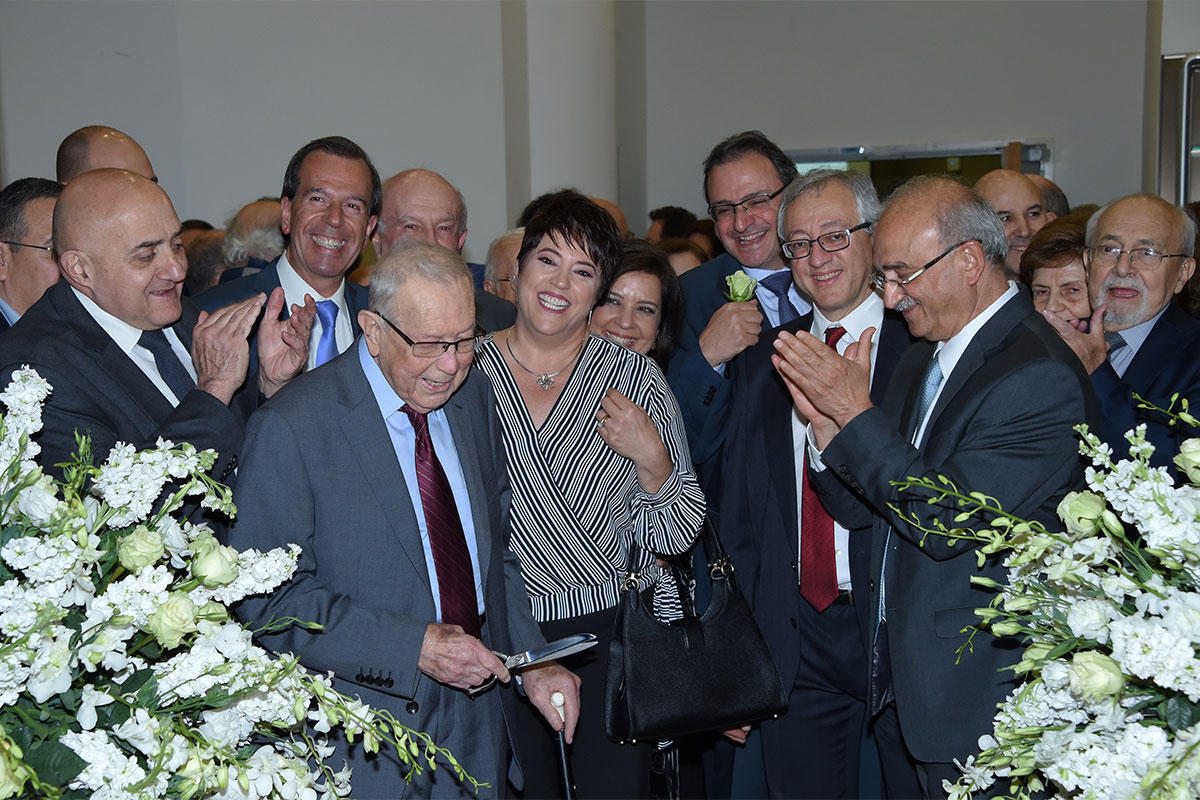Inauguration of the Dr. Zahi Hakim Museum of X-ray Tubes
Pioneer in radiology gifts his priceless and extensive collection of X-ray tubes to LAU’s School of Medicine.
Sourcing, acquiring, and cataloguing X-ray tubes dating back to their origins in the late 1800s has been a labor of love for eminent radiologist Dr. Zahi Hakim for the past 50 years. Now, Dr. Hakim has chosen to entrust LAU’s Gilbert and Rose-Marie Chagoury School of Medicine with the custody and care of his extensive collection – among the best five in the world and the only one outside Europe and the US – housed at the Dr. Zahi Hakim Museum.
The value of the 185 plus items cannot be overestimated. Dr. Hakim’s magnanimous gift not only places a fully-documented tangible history of a revolutionary invention within the reach of medical students and professional health providers, but it also serves as an inspiration for them to persevere and innovate in the service of medicine.
LAU’s immense gratitude and admiration for Dr. Hakim – who headed the Medical Imaging Department at Rizk Hospital, currently LAU Medical Center-Rizk Hospital, for 47 years – were reflected in a ceremony inaugurating the museum on April, 17.
Among the attendees were Dr. Hakim’s family, friends, colleagues, Dean of the School of Medicine Michel Mawad, Chief Executive Officer of Rizk Hospital Sami Rizk, Assistant to the President for Special Projects Saad el Zein, and member of the Board of Trustees Mona Nehmeh.
In his opening speech, Assistant Professor and Chair of Radiology at LAU Medical Center-RH Daniel Mahfoud paid tribute to Dr. Hakim, the friend, father, colleague, and “gentleman who was a pioneer in his field.” He spoke of Dr. Hakim’s passionate worldwide quest for the most deserved tubes, some of which were so precious that they had travelled on Dr. Hakim’s knees on transatlantic flights.
Even though prestigious institutes in the US had proposed to acquire the collection, Dr. Mahfoud said, it was “thanks to the vision and wisdom of our distinguished leadership, namely President Jabbra and Dean Mawad that Dr. Hakim’s legacy has found shelter in our homeland.”
Qualifying their relationship as a “brotherhood,” and Dr. Hakim as the “brother he would’ve wished he had,” Dr. Assaad Rizk recalled the 50 years that they had shared from the start of their careers, in separate specialities, to their simultaneous retirement. He went on to praise his colleague’s devotion and service to his patients, even in times of war.
In his capacity as a radiologist rather than a specialist in neurology and cerebrovascular disease, Dr. Mawad – representing Dr. Jabbra – sought to impress on the audience the great significance of the collection. He traced the history of X-rays from the accidental discovery of electromagnetic radiation by German engineer and physicist Wilhelm Conrad Röntgen in 1896, the invention of the Crookes tube by the English chemist and physicist Sir William Crookes a year later, to the development of the diagnostic technique of X-ray computed tomography (CT scan) by English electrical engineer Sir Godfrey Newbold Hounsfield in 1971.
“X-ray radiology has made the invisible visible,” Dr. Mawad said, “and there is not a single patient who comes through the hospital doors who does not need some form of imaging.”
It was due to Dr. Hakim’s “wisdom and vision to start collecting back then,” he added, that the collection now has one of the rarest 1896 Crookes tubes among countless invaluable items absent from the museums of the actual manufacturers of X-ray tubes, Philips and Siemens. Thanking his colleague for the generous gift, Dr. Mawad promised “to cherish and protect it as your enduring legacy for generations to come.”
Following a tribute by his children, Najib and Danielle – and amusing anecdotes such as how their father had passed off a tube through customs as a “big light bulb” – Dr. Hakim took the podium to great applause. In a moving speech, he conveyed the attachment he had to his collection which had kept him company for many decades, and was a part of his life. Too large to be stored at his home, it finally needed “to be hosted in a different environment and looked after by energetic and motivated young people.”
The collection, he said, is “second to none”; besides antique X-ray tubes and radiology-related accessories, it boasts the largest number of X-ray kenetrons, and part of the museum is also devoted to the history of television, and television camera tubes.
“We are here today to celebrate the transfer of this collection to the best people and the best location I can think of, the LAU and the School of Medicine,” Dr. Hakim said, expressing his “gratitude to LAU for housing what was once a collection and is now a museum.”
